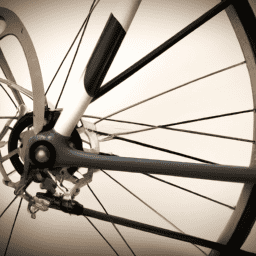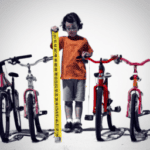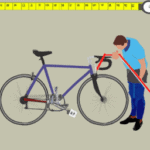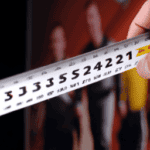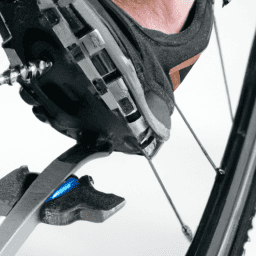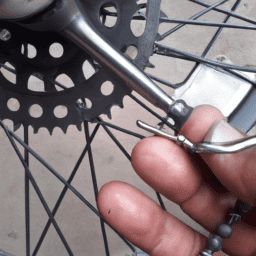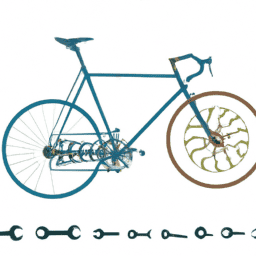Standing in front of the seemingly infinite lineup of bicycles at my neighborhood bicycle store, the extensive selection of sizes and designs left me feeling quite daunted. Yet, there was one persistent question that echoed in my mind: which size bicycle is right for me? More precisely, what is the ideal height for a 24-inch bike?
Choosing the right size bike is crucial for a comfortable and safe ride. Riding a bike that is too big or too small can cause discomfort, poor performance, and even injury.
In this article, I will delve into the world of bike sizing and explore the ideal height for a 24 inch bicycle. From measuring leg length to considering riding style, we will cover all the important factors to help you make an informed decision when purchasing your next bike.
So, let’s dive in and discover the perfect fit for you!
Key Takeaways
- A 24-inch bike is typically suitable for pre-teens or young teenagers, and the ideal height range for this type of bike is between 4’0′ and 5’0′.
- It is important to measure a child’s inseam and compare it to the bike’s standover height for proper fit.
- Choosing the right bike size is crucial for comfort and safety, as a bike that is too small or too big can cause discomfort, pain, and injury.
- Customizing options such as adjusting saddle height and handlebar position can greatly affect the fit of the bike, and it is a personal decision that requires trial and error to find the right size.
Understanding Bike Sizing
When choosing a bike, it’s important to understand the sizing to ensure a comfortable and safe ride. Common mistakes include choosing a bike based on age or assuming that all bikes are the same size. However, bike sizing is actually determined by the measurements of the rider’s body, specifically their inseam length.
To determine the appropriate bike size, measure your inseam length and refer to the size chart provided by the bike manufacturer. Keep in mind that different types of bikes may have slightly different sizing, so make sure to check the specific chart for the type of bike you’re interested in.
By choosing the correct bike size, you can avoid discomfort or injury from riding a bike that is too small or too large. With this in mind, let’s move on to discussing the ideal height for 24 inch bicycles.
Ideal Height for 24 Inch Bicycles
The perfect fit for a 24-inch bike is typically for pre-teens or young teenagers who are still growing. It’s not recommended for daily commuting or long-distance rides for adults because the bike’s frame and components are designed for smaller riders, and the riding position may be uncomfortable.
However, if you’re looking to buy a 24-inch bike for a child, it’s important to consider their height and leg length. The ideal height range for a 24-inch bike is between 4’0’and 5’0′.
To ensure a proper fit, measure your child’s inseam and compare it to the bike’s standover height. This measurement is the distance between the ground and the top of the bike’s top tube when the bike is standing upright. By measuring leg length and comparing it to the standover height, you can ensure a comfortable and safe fit for your child.
Measuring Leg Length
As a cyclist, I know that having the right bike fit is crucial for comfort and performance. One key factor in achieving a good fit is measuring leg length.
Knowing your leg length is important because it determines the height of your saddle and the length of your bike’s top tube.
In this discussion, I’ll explain how to measure your leg length accurately.
Importance of Leg Length
You’ll want to measure your leg length accurately to ensure your inch bicycle is the right fit for you. The importance of leg length can’t be overstated.
A bike that is too small or too big can cause discomfort, pain, and even injury. Here are a few reasons why leg length matters when it comes to cycling:
- Proper leg extension ensures efficient pedaling and reduces strain on the knees.
- A bike that’s too small can cause cramped positioning, which can lead to poor balance and control.
- A bike that’s too big can cause overstretching, which can lead to strain on the lower back and neck.
To avoid these issues, it’s best to measure your leg length and choose a bike that’s the appropriate size.
In the next section, we’ll go over how to measure your leg length accurately.
How to Measure Leg Length
Measuring your leg length accurately is crucial in order to ensure your bike fits you perfectly and prevents discomfort or injury. Leg length discrepancies can cause a variety of problems, including knee pain and improper alignment.
To measure your leg length, you’ll need a tape measure, a level surface, and someone to assist you. Start by standing barefoot against a wall with your feet shoulder-width apart. Place a book between your legs, with the spine pressed against your crotch.
Have your assistant measure from the top of the book to the floor. Repeat this process several times to ensure accuracy. Once you have your leg length, you can use it to find the correct saddle height for your bike. This will ensure optimal power transfer and prevent injury.
With the correct saddle height, you’ll be able to ride comfortably and efficiently, regardless of your riding style.
Riding Style
If you’re planning to ride off-road, a mountain bike with wider tires and a more upright riding position may be more suitable for you. When it comes to sizing, a 24 inch bicycle can be a good fit for recreational riding, especially for those who are shorter in height. However, for mountain biking, it’s important to consider the terrain and your riding style before choosing a bike size.
Mountain biking involves rough terrains, steep inclines, and plenty of bumps along the way. A 24 inch bicycle may not provide the necessary stability and control needed for this type of riding. On the other hand, if you plan on riding on smoother roads or bike paths, a 24 inch bicycle can be a great option.
It offers a comfortable ride and allows for easy maneuverability, which can be especially beneficial for beginners. Before making a final decision on a bike size, it’s important to try out different sizes and styles to see what works best for you.
This will ensure that you have a comfortable and safe ride, no matter what type of riding you plan on doing.
Trying Out Different Sizes
When trying out different bike sizes, it’s important to find one that feels comfortable and fits your body well. It’s not uncommon for people to prefer a bike that is slightly smaller or larger than the recommended size for their height.
It’s all about finding the right fit for your body and riding style. When comparing different bike brands, it’s important to note that sizes may vary, so it’s always a good idea to try out different models before making a final decision.
Customizing options can also play a role in finding the right bike size. For example, adjusting the saddle height and handlebar position can greatly affect the fit of the bike. A professional bike fitter can help with these adjustments, or you can make them yourself with the help of online resources.
Ultimately, finding the right bike size is a personal decision that requires some trial and error. With the right fit, you can enjoy a comfortable and efficient ride.
Frequently Asked Questions
What is the weight limit for a 24 inch bicycle?
The maximum weight limit for a 24 inch bicycle varies depending on the brand and model, but generally ranges from 150 to 250 pounds. Age suitability is typically 8 to 14 years old. It’s important to check manufacturer specifications before purchasing.
Can adults ride 24 inch bicycles or are they only for children?
As an adult, I can ride a 24 inch bicycle, but there are limitations. The smaller frame may cause discomfort and limit speed, but the advantages include easier maneuverability and a lower center of gravity for better balance.
What type of terrain is best suited for a 24 inch bicycle?
The 24 inch bicycle is best suited for off road adventures and mountain biking. Its smaller size allows for greater maneuverability and control on rough terrain. Consider tire tread and suspension when choosing a suitable bike for your needs.
What is the average cost of a 24 inch bicycle?
As someone who loves cycling, I can tell you that 24 inch bicycles come in a variety of styles and features to consider. The benefits of choosing one over larger sizes include better maneuverability and lower cost. On average, a 24 inch bicycle can cost anywhere from $100 to $500.
Are there any safety precautions to consider when riding a 24 inch bicycle?
When riding a 24 inch bicycle, proper posture is important to avoid injury. Additionally, regular maintenance such as checking brakes and tires can prevent accidents. Always wear a helmet and follow traffic laws for added safety.
Conclusion
To conclude, choosing the right size bicycle is essential for comfortable and safe riding. It’s crucial to understand bike sizing and how it relates to your height and leg length.
For those between 4’5’and 5’2′, a 24 inch bicycle is an ideal option. However, this isn’t a strict rule, and one’s riding style also plays a significant role in determining the right size.
Measuring leg length is an essential aspect of choosing the right bike size. It’s recommended to measure the inseam length and compare it with the standover height of the bike.
It’s also essential to consider factors such as riding style, terrain, and personal preferences when choosing a bike size. As the saying goes, "one size doesn’t fit all,"and trying out different sizes and models can help determine the perfect fit for you.
So, take your time, do your research, and choose a bike that fits you well to enjoy a comfortable and safe ride.

